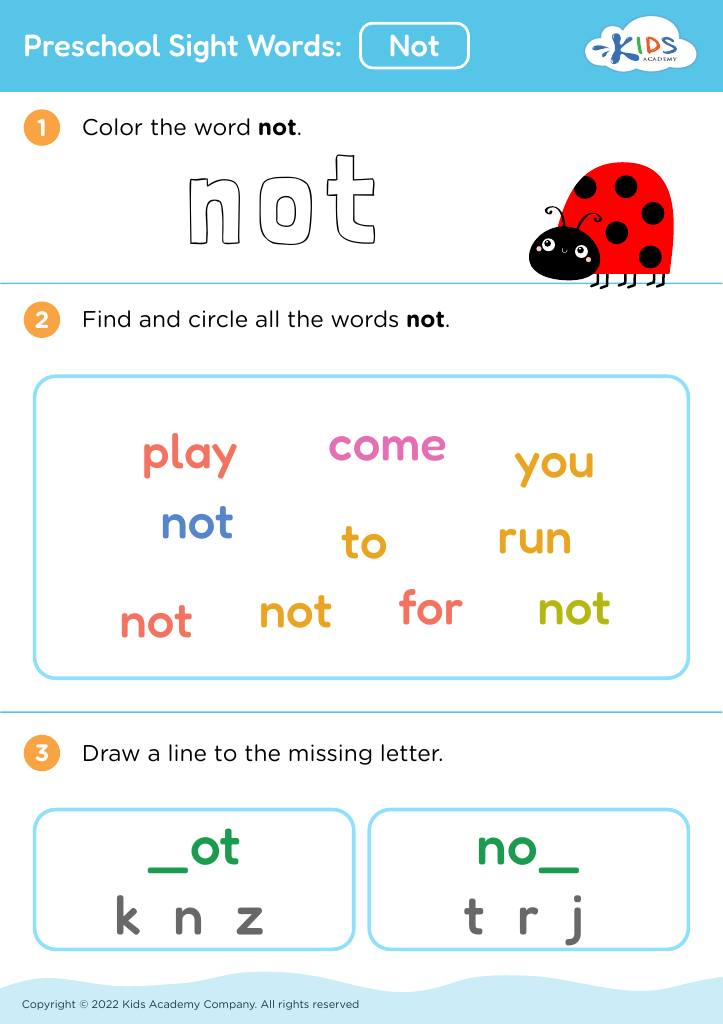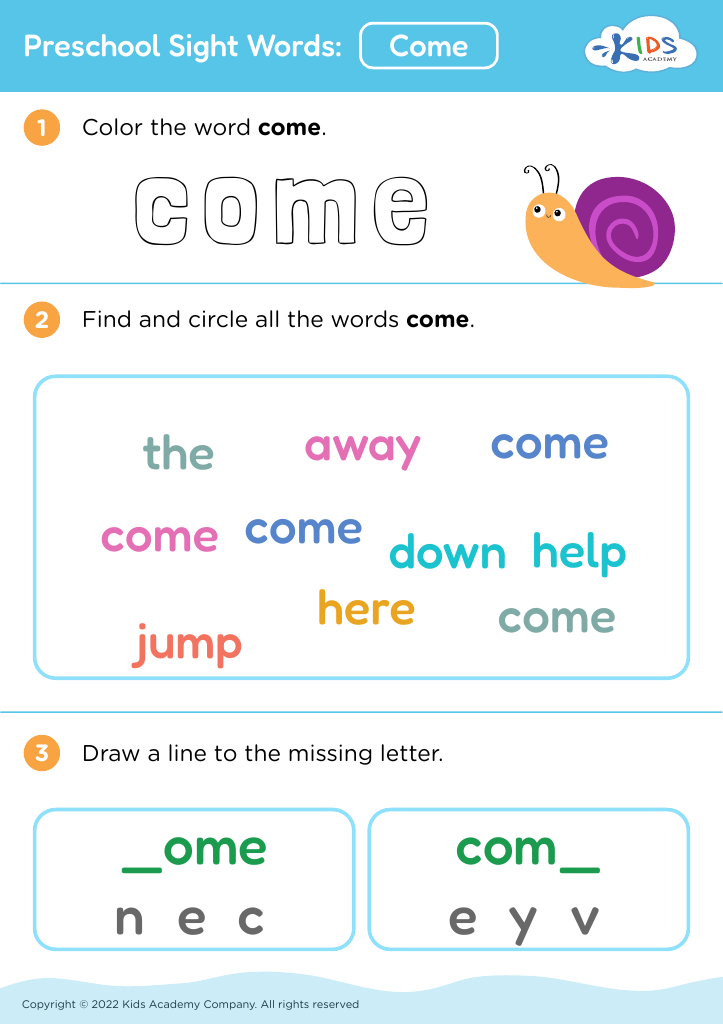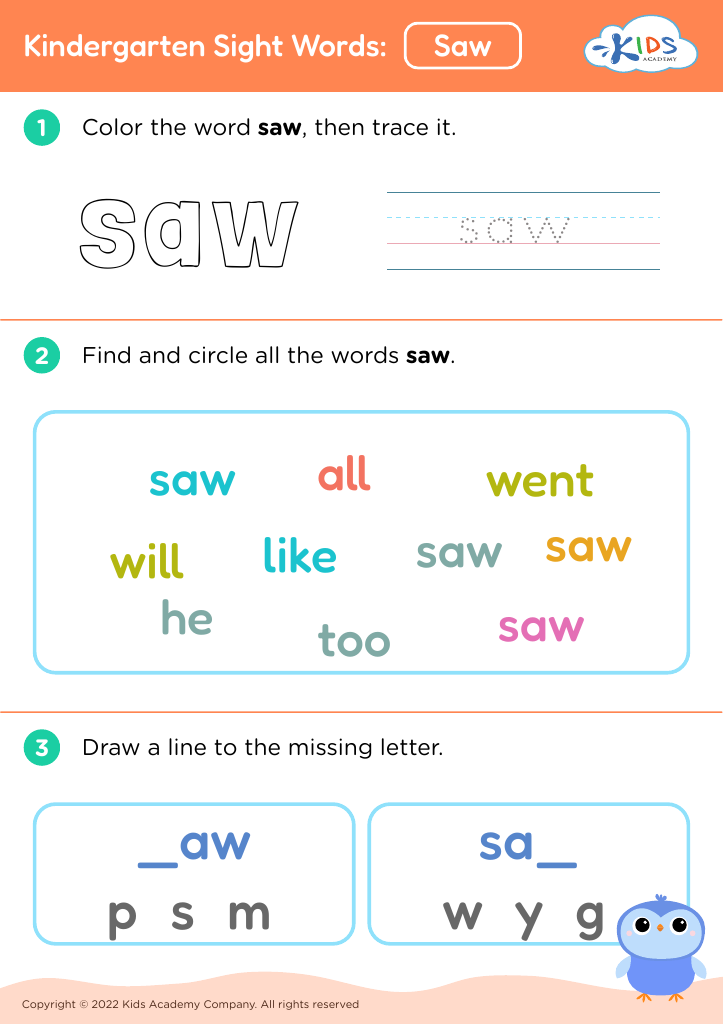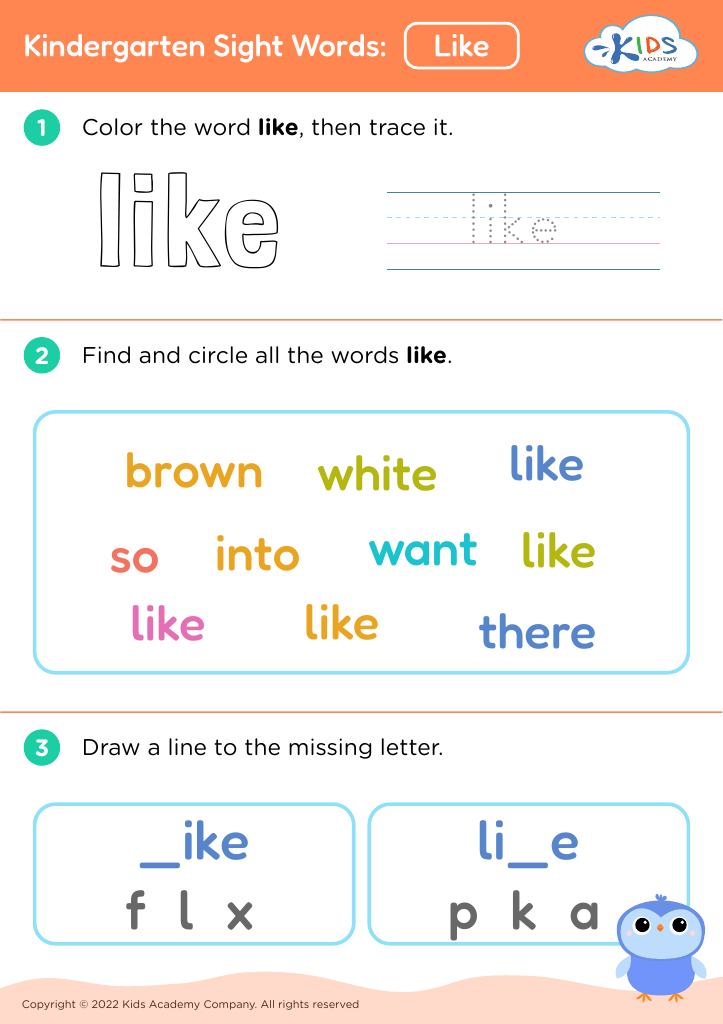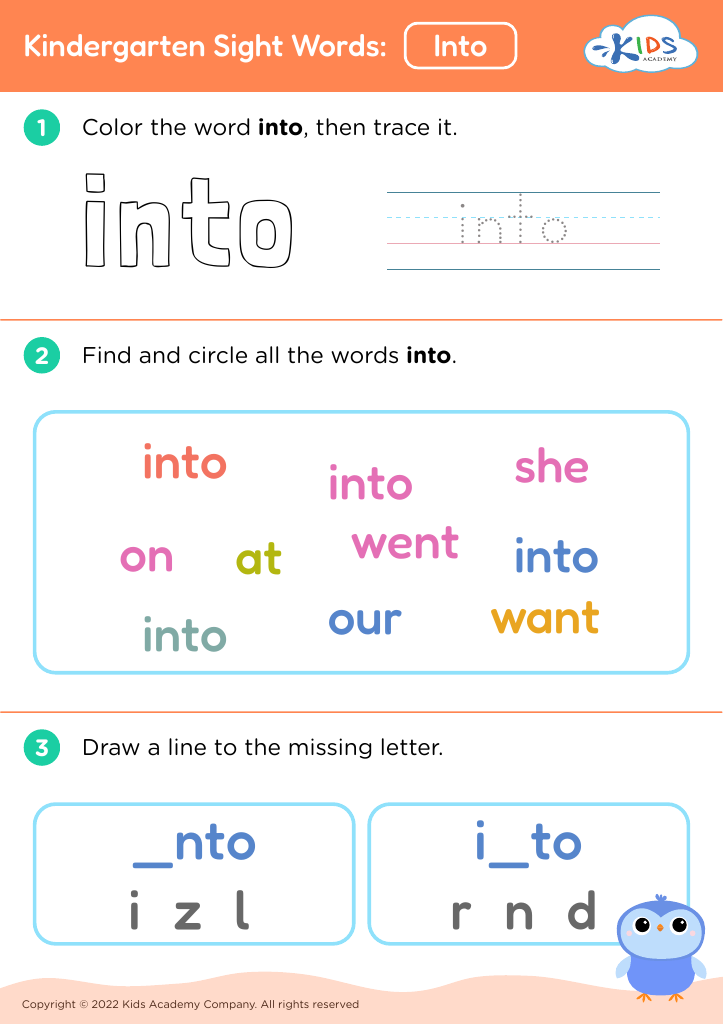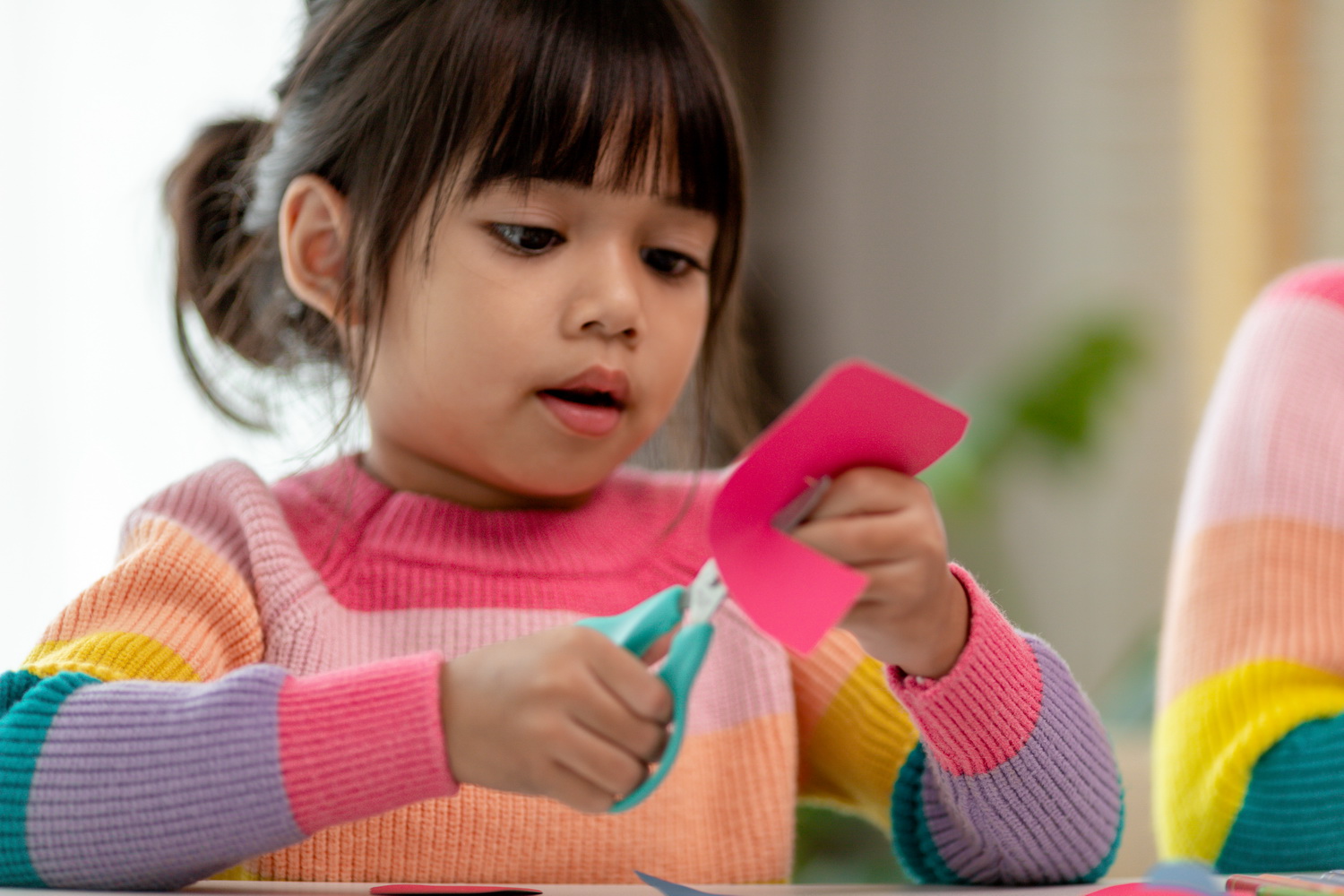Identifying shapes Reading Worksheets for Ages 3-4
5 filtered results
-
From - To
Our "Identifying Shapes Reading Worksheets for Ages 3-4" are designed to develop your child's early reading and cognitive skills. Through engaging activities and colorful illustrations, children will learn to recognize and name basic shapes such as circles, squares, and triangles. These worksheets also enhance fine motor skills, as kids practice tracing and drawing these shapes. Perfect for preschoolers, our fun, educational resources foster both academic growth and creativity, ensuring a solid foundation for future learning. Encourage active participation and watch your little one delight in discovering the world of shapes while building essential reading skills. Start today!
Identifying shapes and engaging in early reading are foundational skills crucial for the cognitive development of children aged 3-4, and parents and teachers should care deeply about nurturing these abilities. At this developmental stage, children’s brains are highly receptive to learning, making it an optimal time to introduce basic concepts that will form the building blocks for future learning.
Learning to identify shapes helps children in several ways. Firstly, it enhances their visual perception skills, enabling them to recognize and differentiate between objects—a fundamental skill for reading, writing, and math. Recognizing shapes also paves the way for geometry skills, as children begin to understand and categorize the world around them. Activities like sorting and matching shapes promote problem-solving and reasoning abilities, fostering cognitive growth.
Early reading and exposure to language have a profound impact on literacy development. Reading transforms linguistic inputs into a lifetime love for stories and information, broadening vocabulary and enhancing comprehension skills. For ages 3-4, picture books introduce children to print awareness, phonemic awareness, and narrative structures. This exposure builds a solid literacy foundation, making the transition to more advanced reading smoother.
By prioritizing these activities, parents and teachers are setting children on a path toward successful academic achievements and arming them with essential skills for lifelong learning.
